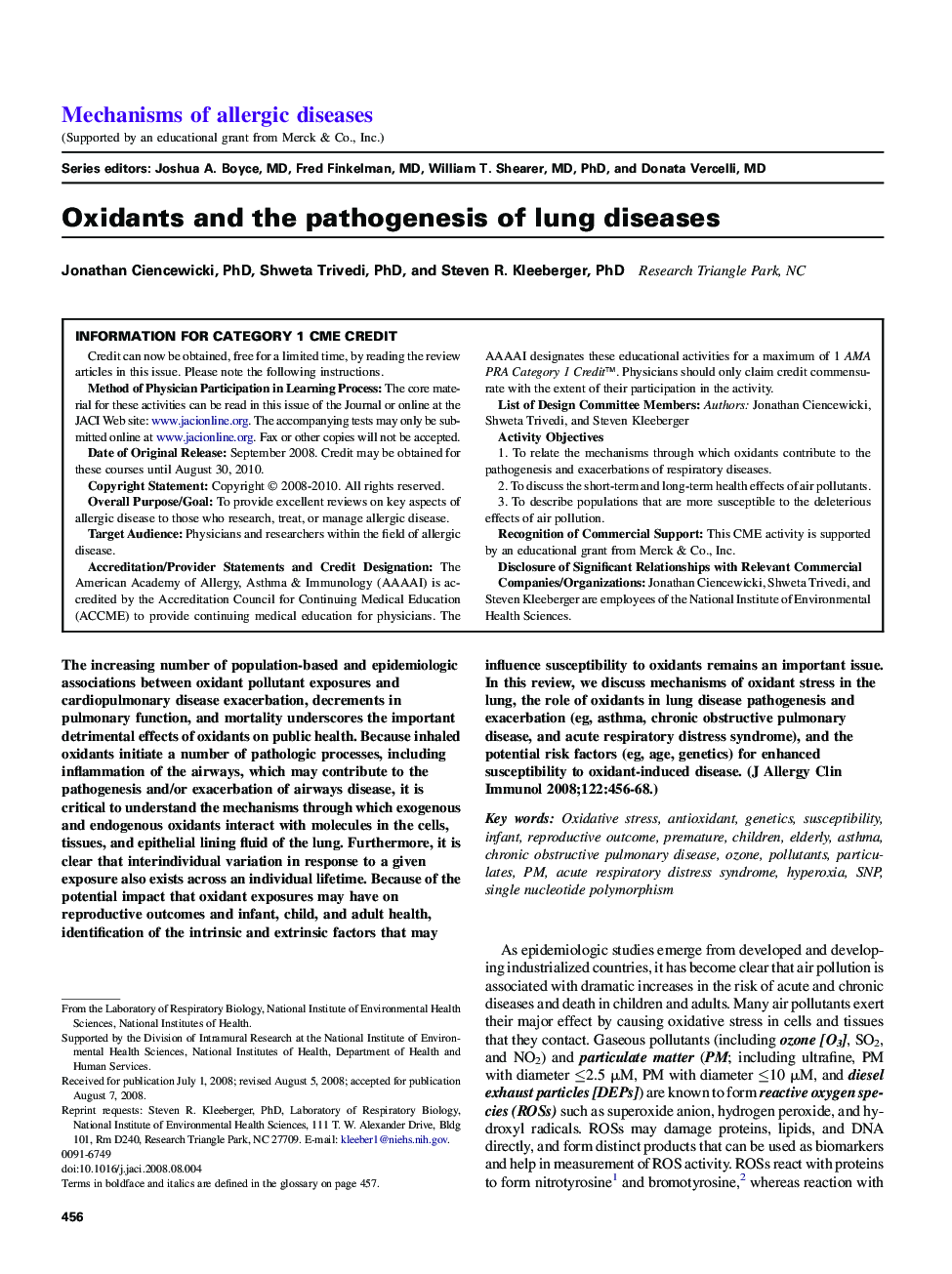| Article ID | Journal | Published Year | Pages | File Type |
|---|---|---|---|---|
| 3202426 | Journal of Allergy and Clinical Immunology | 2008 | 13 Pages |
The increasing number of population-based and epidemiologic associations between oxidant pollutant exposures and cardiopulmonary disease exacerbation, decrements in pulmonary function, and mortality underscores the important detrimental effects of oxidants on public health. Because inhaled oxidants initiate a number of pathologic processes, including inflammation of the airways, which may contribute to the pathogenesis and/or exacerbation of airways disease, it is critical to understand the mechanisms through which exogenous and endogenous oxidants interact with molecules in the cells, tissues, and epithelial lining fluid of the lung. Furthermore, it is clear that interindividual variation in response to a given exposure also exists across an individual lifetime. Because of the potential impact that oxidant exposures may have on reproductive outcomes and infant, child, and adult health, identification of the intrinsic and extrinsic factors that may influence susceptibility to oxidants remains an important issue. In this review, we discuss mechanisms of oxidant stress in the lung, the role of oxidants in lung disease pathogenesis and exacerbation (eg, asthma, chronic obstructive pulmonary disease, and acute respiratory distress syndrome), and the potential risk factors (eg, age, genetics) for enhanced susceptibility to oxidant-induced disease.
